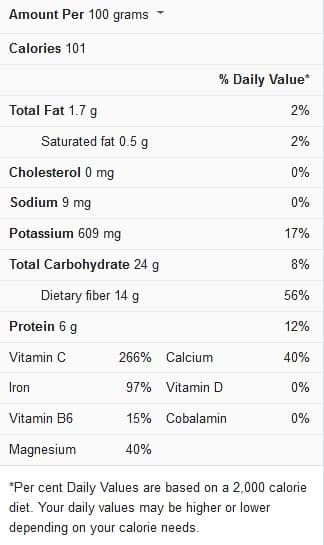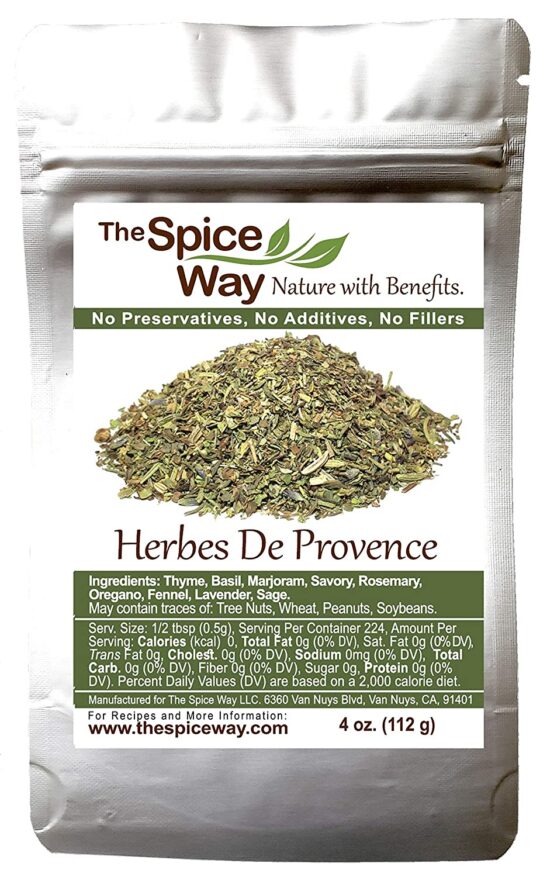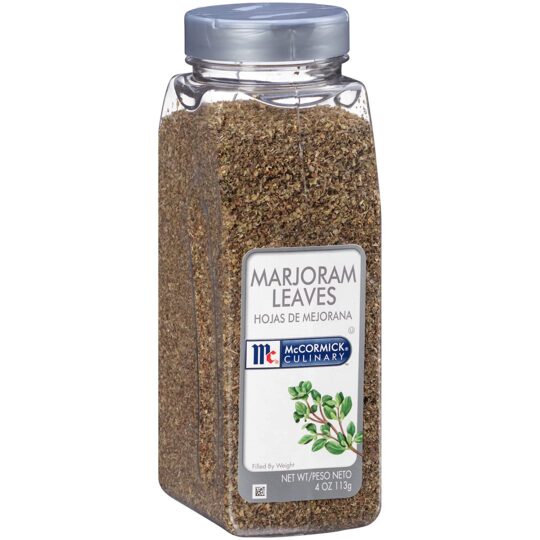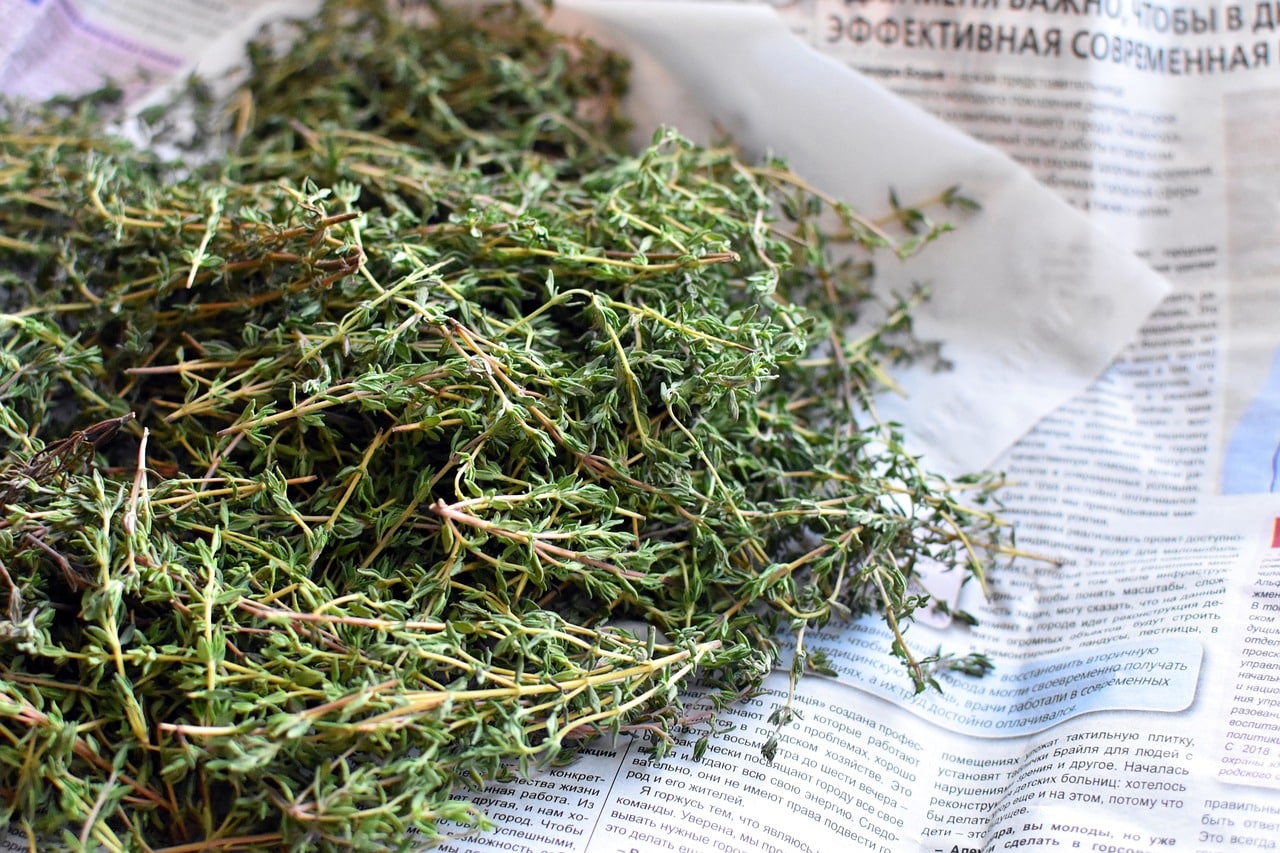Thyme is one of the oldest culinary staples called for in many cuisines, especially Mediterranean ones; the herb has excellent flavor profiles that taste well in dishes and great health benefits for the body.
The dry version of this herb is a common spice found in the spice cabinet; it seems as if every recipe calls for thyme, and it might be easy to forget you’ve run out of it because it is always there for you, running out of an ingredient needed in a recipe last minute could be very frustrating but having a backup plan always saves the day.
If you don’t know some good backup ingredients for thyme, keep reading to find out.
Thyme Spice Nutrition Facts

What is thyme spice?
Thyme is one of the oldest, most commonly available, and flavorful herbs belonging to the mint family; it is used in much Mediterranean cooking because it originated in the region. It is also known scientifically as Thymus vulgaris and is used as a culinary ingredient for medicinal and ornamental purposes because of its beautiful pink and purple flowers.
Thyme is also available in fresh, dried, and oily forms; they carry unique aromatic profiles and can all be used to cook delicious recipes.
Thyme contains some chemicals that aid with bacteria and fungal infections, helps in relieving coughs, and many other benefits too numerous to mention. Thyme comes in different varieties, and some hybrids have been made mainly for ornamental purposes; an example is the ‘Silver Queen’ that has white-margined leaves and gained the award of Garden Merit from the Royal Horticultural Society.
The wild thyme is also popular in medicine, but it is not commonly used in culinary arts, so don’t confuse the normal thyme.
Thyme spice uses in recipes
When it comes to cooking, the fresh and dry thyme imparts a sweet but earthy flavor that mixes well with other ingredients in a recipe to produce a rich blend of flavor. While the fresh thyme would give a fresher thyme flavor, the dry thyme is used mostly because of its longer shelf life.
Thyme is a major addition to the Mediterranean, Middle Eastern, French, and Italian cuisines. They are added in almost every recipe but commonly in soups, sauces, pizza, roasted meats and veggies, pasta, and the famous herb de Provence spice mix.
The list of recipes to make with thyme is limitless, but here are 15 recipes you could try in your kitchen.
- Sauteed Mushrooms with Thyme
- Creamy Broccoli Potato Soup
- Thyme Tea
- Vegetarian Red Beans and Rice
- Lemon Thyme Sauce
- Roasted Carrots and Onions
- Roasted Potatoes with Thyme
- Seasoned Black Lentils
- Sauteed Carrots with Thyme
- Mushroom Pasta with Goat Cheese & Thyme
- Fresh Corn Soup
- Simple Baked Eggs
- Cheesy Broccoli Casserole
- Salmon with Capers & Thyme
- Roasted Onions with Thyme
Thyme spice substitutes
Thyme is a common spice to find in the kitchen cabinet; it is used in several recipes, both those that call for it and those that don’t; one might say it is inevitable to use.
Thyme is familiar and easy to find, but that doesn’t guarantee its availability, because it’s common in your kitchen you might not even notice its absence until you need it, well this is where substitutes come in, and the best part is thyme has a lot of them which I’m sure are in your kitchen cabinet. So without wasting too much time, let’s look at them.
Italian seasoning

This substitute is first on our list because it falls under the easy-to-find spice mix that you may already have in your kitchen cabinet. Italian seasoning has a blend of basil, oregano, thyme, rosemary, sage, and marjoram, producing a more aromatic and flavorful meal when used instead of thyme.
Italian seasoning is popular in Mediterranean cooking and pairs well in recipes like pasta dishes, soups, sauces, marinades, and so many more.
When substituting, a 1:1 ratio can be worked with.
Herbes de provence

Another excellent spice mix that you may have if you don’t have the Italian seasoning mix could substitute thyme in many recipes without delay or stress.
It contains dry herbs like basil, marjoram, thyme marjoram, parsley, bay leaves, rosemary, tarragon, thyme, and fennel seeds. It is native to the Provence region of southeast France. Still, the spice’s popularity has spread to different parts of the
e world and is now commercially available under different brand names.
It works excellent in many recipes, including the one thyme is used for, and you can substitute it for thyme with a 1:1 ratio, but start small since its flavor might be a bit strong for most people.
Marjoram

When looking for a thyme substitute, it’s best to go with the ones from the same mint family; marjoram is one of them. It has a mildly sweet flavor with minty and Woody notes similar to thyme and is used in similar recipes.
Whichever you purchase, fresh or dry marjoram can be used in place of Thyme with these measurements. Use a 1:1 ratio when you’re substituting fresh marjoram for fresh thyme and a 1:1 ratio when substituting dry marjoram for dry thyme.
Then use half the amount of dry marjoram to substitute a total amount of fresh thyme and double the amount of fresh marjoram to substitute dry thyme.
Frequently asked questions (FAQs)
What is the best type of thyme for cooking?
For flavor and convenience, the best type of thyme is the low-growing, shrubby ones known as English, French, lemon, or winter thyme.
What do thyme, lemon, and Ginger do?
Mixing thyme, lemon, and ginger as a drink are beneficial to health, and it also acts as a natural remedy for cold.
Does thyme have medicinal uses?
Thyme is versatilely used as leaves, flowers, and essential oil; Thyme may have some benefits in relieving cough and contains antioxidants.
Conclusion
Thyme is a very useful spice in many recipes; however, using a substitute when it’s unavailable is acceptable, so feel free to use the ones listed in this article, and if you don’t have any, look for herbs that are from the same mint family as thyme like oregano, savory, tarragon, etc.
